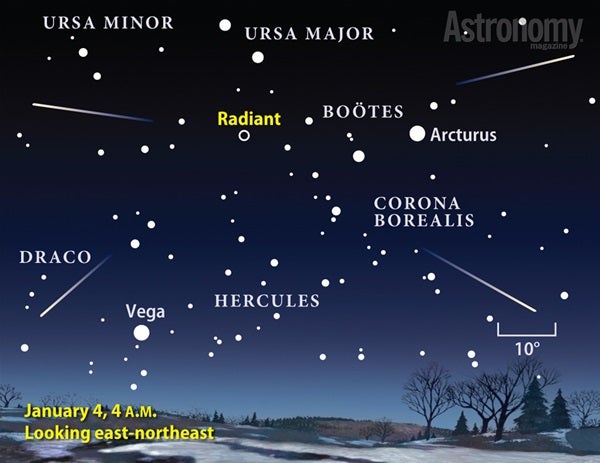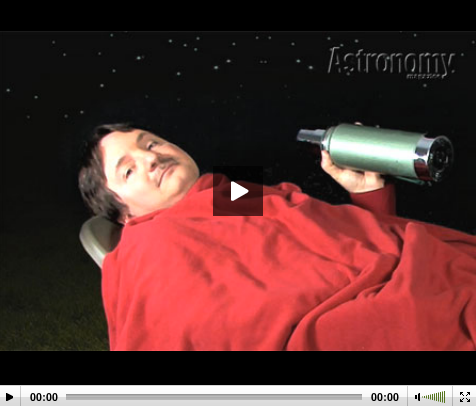The Quadrantids, which are active December 28 through January 12, peak the night of January 3/4 and can produce as many as 120 meteors per hour under ideal conditions. Unfortunately, a Full Moon peak of January 4 makes finding such dark skies impossible.
According to Senior Editor Richard Talcott, your best bet to catch the Quadrantids this year is to observe in the hour before dawn. “Pick a spot where you can hide the Moon, which hangs low in the west, behind some buildings or trees,” he says. The show won’t reach a great rate, but you still could see a dozen or two meteors per hour.
Meteors appear because small particles of dust collide with Earth’s atmosphere. The friction between these motes and the atmosphere vaporizes the dust, leaving only a trail of light in the sky. Meteor showers usually occur when Earth passes through a comet’s stream of debris — discarded dust that traces a comet’s orbit.
The Quadrantids, however, occur when Earth passes through the debris tail of a near-Earth asteroid called 2003 EH1. It orbits the Sun once every 5.5 years and was discovered just 10 years ago. To see the meteors caused by this space rock, look one-third of the way across the sky from the radiant (the spot on which the meteor paths appear to be centered) — in this case, in Boötes.
- Video: How to observe meteor showers, with Michael E. Bakich, senior editor
- Video: Easy-to-Find Objects in the 2014/2015 Winter Sky, with Michael E. Bakich, senior editor
- StarDome: Locate the shower’s radiant in Boötes in your night sky with our interactive star chart.
- The Sky this Week: Get your meteor shower info from a daily digest of celestial events coming soon to a sky near you.
- Sign up for our free weekly email newsletter.












